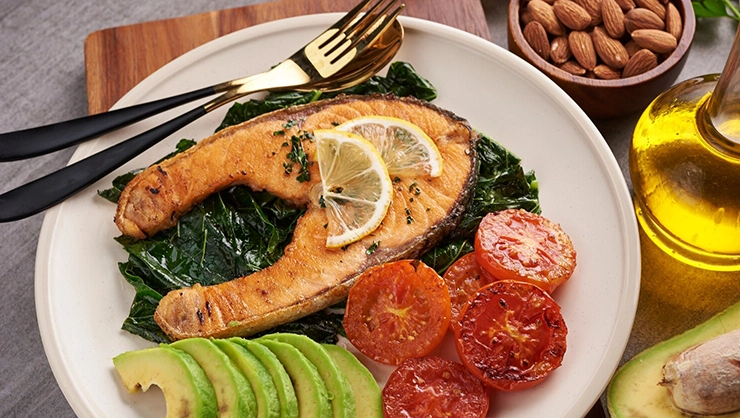Salmon, Trout, Pink Salmon and Chum Salmon. What’s Better for Health and Beauty?
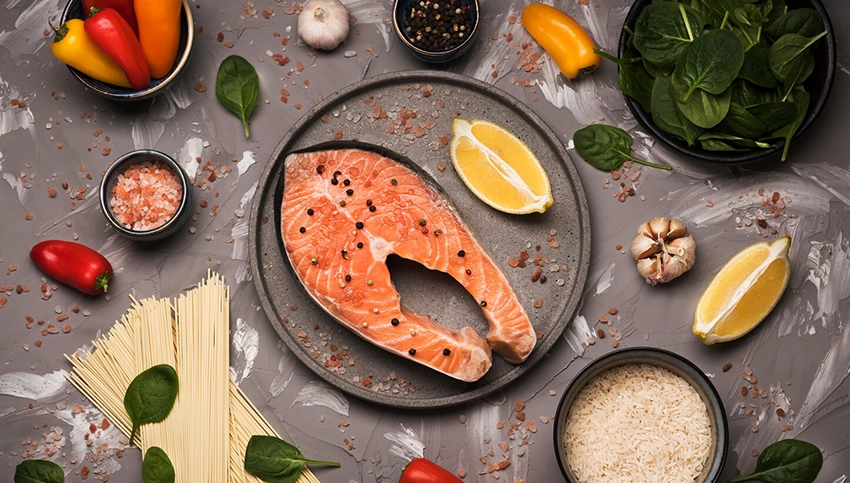
Among the variety of the red fish delicacies on the shelves of the stores, it can sometimes be quite confusing how to distinguish them one from another, as well as which fish would be better to get for your health and beauty. The Fashiongton Post will help you to find out the answers to those tricky questions that has arisen around such tasty, healthy and so many-sided fish.
Are all red fish salmon?
To clear up from the beginning, salmon is not a specific species of fish, but rather the general name of a large and diverse family called “Salmonidae.” And all the above species of fish from this family are divided into two main genera: noble salmon “Salmo” and Pacific salmon “Oncorhynchus”.
Almost all types of salmon have an unusual, bright shade of flesh that ranges from light pink to deep red, as well as a small number of intermuscular bones. Despite the obvious similarity, these types of salmon differ from each other not only in appearance, but also in their biochemical composition, nutritional value, and fat content. And, of course, in the way how they should be cooked.
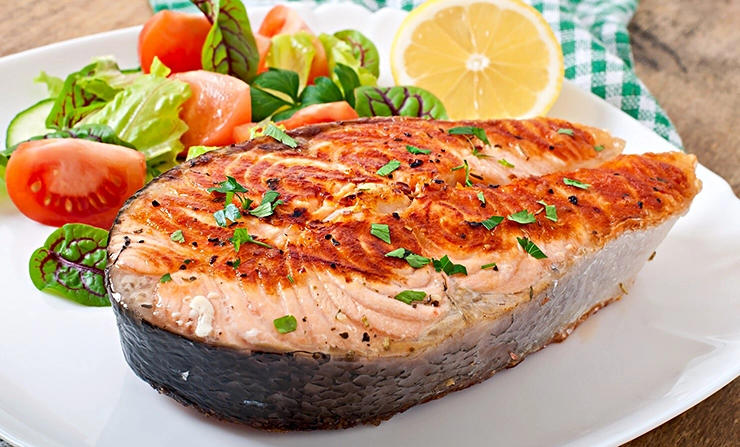
What are the benefits of salmon fish?
Salmon is rich in vitamins A, PP, B7 (H), C, D, E, B12, as well as valuable fatty acids Omega-3 and Omega-6, and contains more than 20 microelements necessary for the human body, such as zinc, selenium, magnesium and phosphorus. Protein in it is easily digestible and provides a longer feeling of fullness.
For example, 100 grams include the following:
- salmon – 225 kcal, 20 g protein and 15 g fat;
- coho salmon – 187 kcal, 24 g of protein and 8.7 g of fat;
- trout – 165 kcal, 20 g protein and 9 g fat;
- sockeye salmon – 157 kcal, 20 g protein and 8.4 g fat;
- chum salmon – 127 kcal, 19 g of protein and 5.6 g of fat;
- pink salmon – less than 120 kcal, 20 g of protein and 4 g of fat.
Salmon
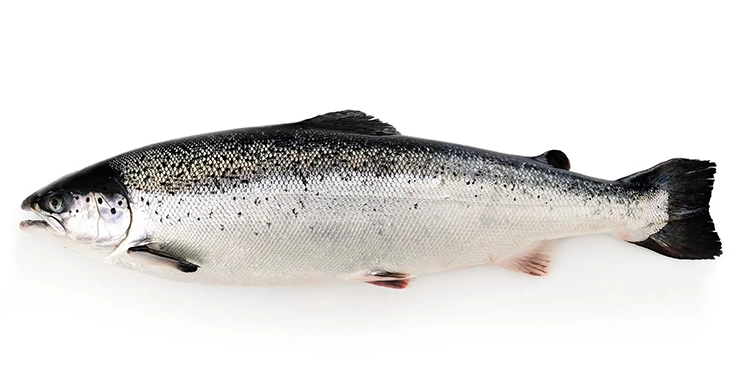
This is perhaps the most delicious fish of the family, which is one of the reason it is called “the king salmon”.
What does salmon look like?
The scales of salmon are large, silvery, on the back they have a greenish or darker gray tint, the belly is light, almost white. You will also see small black spots along the entire fish body above its midline.
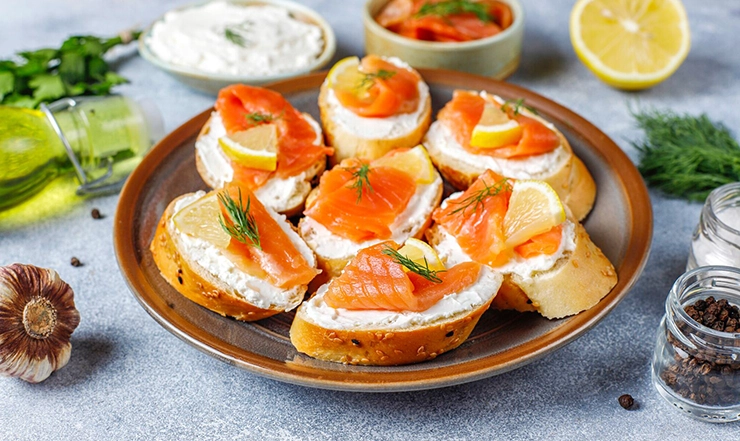
How is salmon different from trout?
It happens that less expensive types of fish, such as trout, are often passed off as salmon. You can distinguish one from the other by the pink stripe that stretches from the trout’s head to the tail along the midline. During heat treatment, trout becomes lighter, but salmon’s flesh color does not change.
How to cook salmon?
Fresh fish is boiled, fried, baked, used in salads, salted and smoked. Most of the useful components are concentrated in lightly salted salmon.
Trout
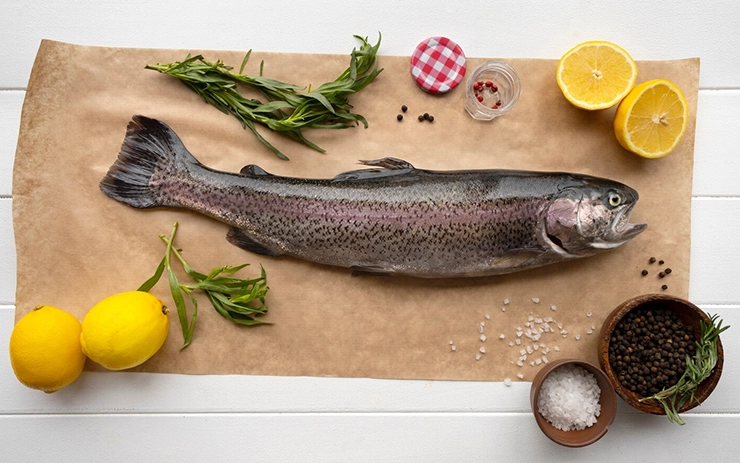
Trout lives only in clean, oxygenated water — its meat is considered “healthy”, and it is also very tasty.
What does trout look like?
The main features and differences common to all the varieties of trout:
- dense voluminous body with a blunt nose, fins and rounded scales,
- adipose fin on the back, closer to the tail;
- double row of teeth;
- color ranges from dark brown to various shades of green and gray, with light sides covered with specks of white, black or red.
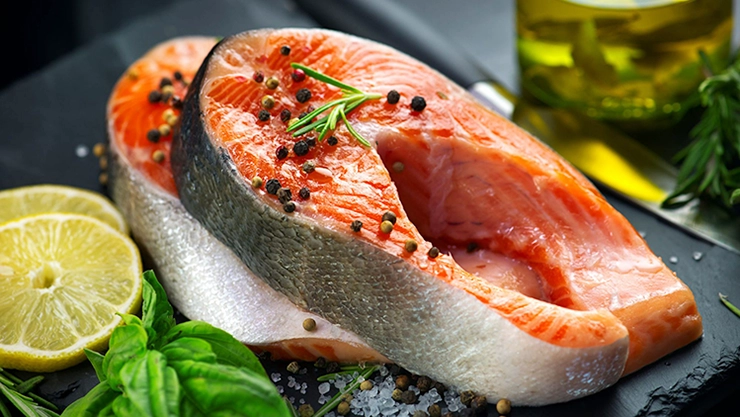
How to cook trout?
Trout is a recognized delicacy. Moderately fatty, tender, with a special and unique aroma — it is said that that good trout smells like a fresh cucumber. The fish can be smoked, baked or fried, as well as very popular in a lightly salted form.
Sockeye Salmon
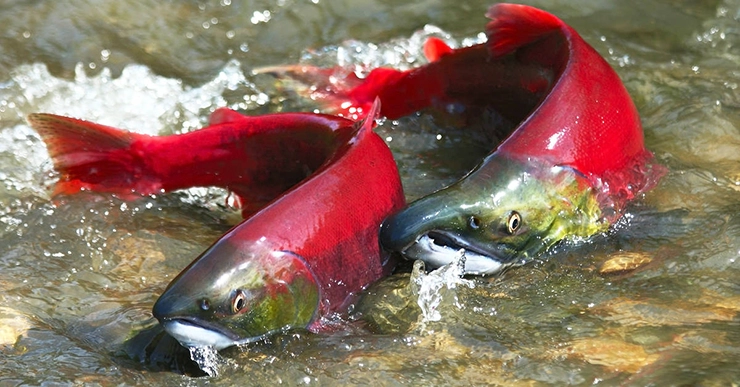
Sockeye salmon (also called as “red salmon”) is another representative of the salmon family of fish species, found in the Pacific basin. Usually reaches 80 cm in length and weighs on average 2–3.5 kg.
What does sockeye salmon look like?
Sockeye salmon differs from the Pacific salmon, chum salmon and coho salmon by its body shape, which is more angular. Another difference is in the bright silver scales and small dark spots on the back. During the mating season, the color of the fish becomes bright red and the head turns green. Sockeye salmon meat is of an intense carmine red color.
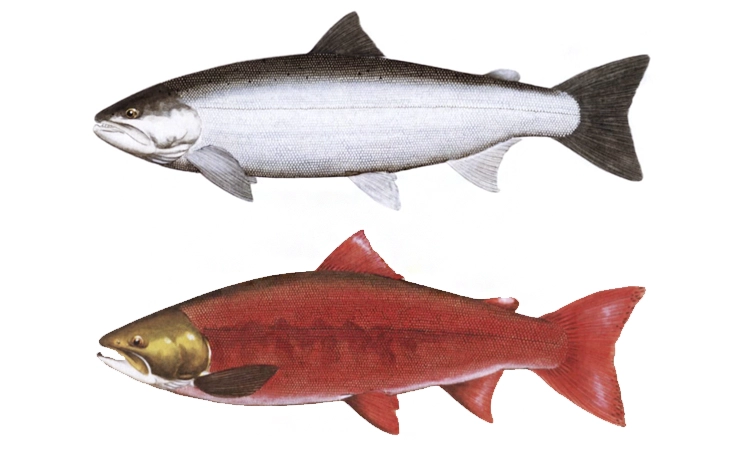
How to cook sockeye salmon?
This fish is especially good when salted. Fresh sockeye salmon has a subtle, delicate taste. In order not to overwhelm it, it is better to use a minimum amount of spices when cooking, and pair it with cream cheese, zucchini or pasta.
Coho salmon
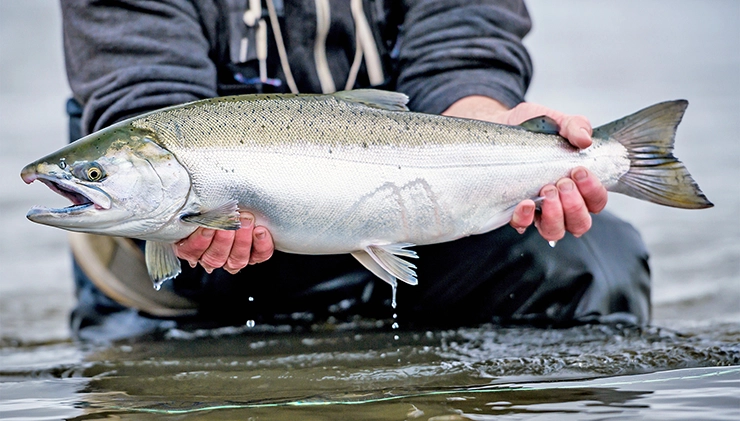
Coho salmon (also known as “Pacific salmon”) is a wild fish and lives only in the cleanest waters.
What does coho salmon look like?
This fish reaches a length of up to 1 meter and weighs up to 15 kg. Coho salmon has bright, light-colored scales, a large, massive head with the large upper part of the mouth and a highly raised forehead.
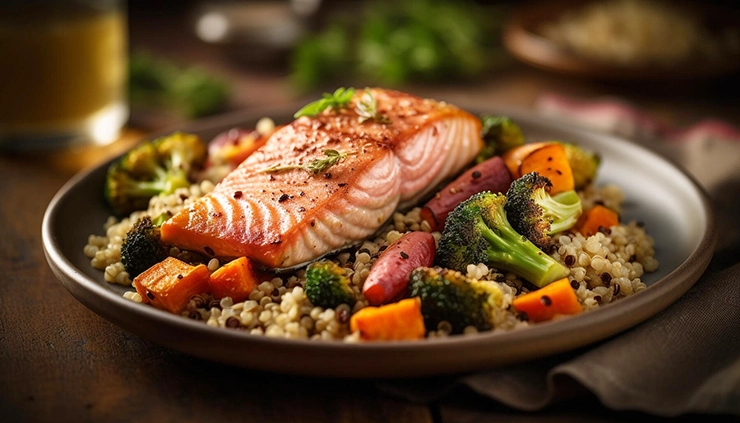
How to cook coho salmon?
Coho salmon rightfully takes pride of place on the menus of the best restaurants. The meat is slightly bitter, tender, has a rich and interesting taste, as well as bright and rich color. Coho salmon steaks are no less tasty than salmon steaks, but are much cheaper.
Chum salmon
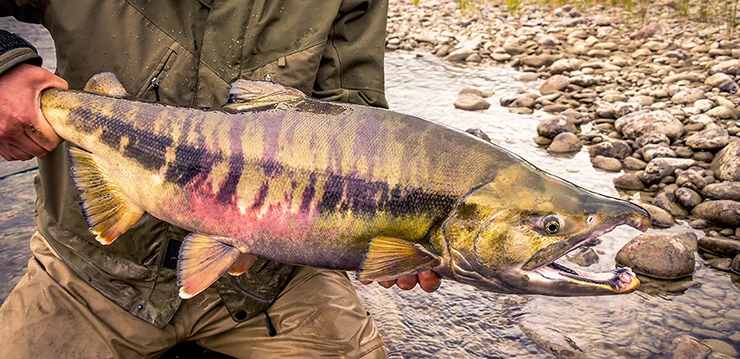
Chum salmon is considered to be the most dietary salmon. The size of the fish rarely exceeds a meter in length, and the weight ranges from 3 to 10 kg. Young fish live in the seas, not far from the coast.
How to distinguish chum salmon?
On the back, the scales have a beautiful blue-azure tint. Chum salmon meat is rich red in color, quite dense, but tender.
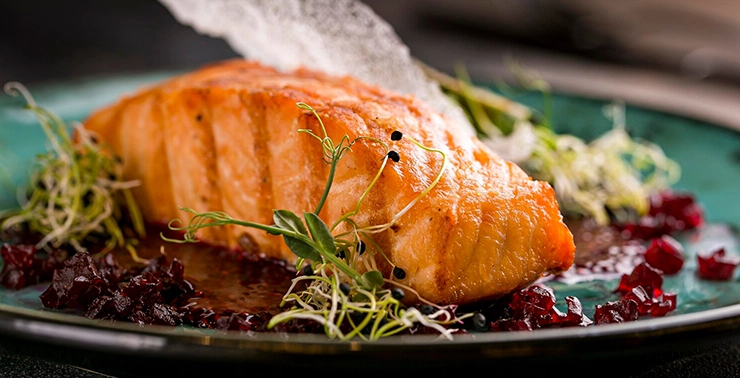
How to cook chum salmon?
The taste of chum salmon is better revealed when baked in foil, sleeve, or in a closed thick-walled container. When frying, it is recommended to use a thick layer of batter, otherwise the meat will turn out dry and tough.
Pink salmon
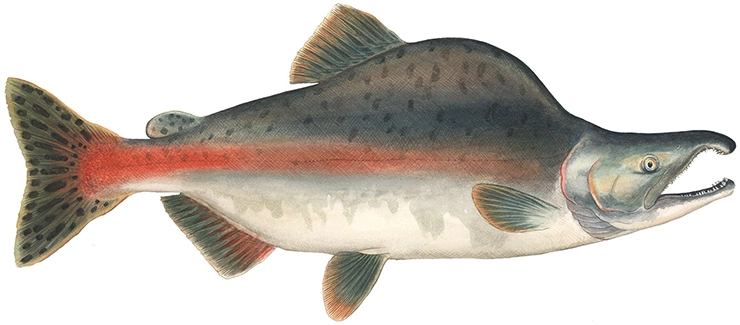
Pink salmon is a real champion in terms of population size and the most affordable delicacy among the other types of red fish.
What does pink salmon look like?
Pink salmon reaches a length of 50–60 cm and weighs 1.5–2.5 kg. It differs from its closest relative (such as chum salmon, for example) in having smaller scales and a spotted tail. A striking feature of adult males is an elongated snout with a predatory “beak” and a “hump” on the back of the males. During the mating season, the color of the fish changes: the scales become brown, the fins and head darken, the abdomen becomes yellowish.
How to cook pink salmon?
The low fat content allows pink salmon to be considered truly lean, ideal for a diet. Inferior in taste to salmon and trout, pink salmon is great for children’s menu: you can use it to cook broths, steam, make purees and soufflés.
